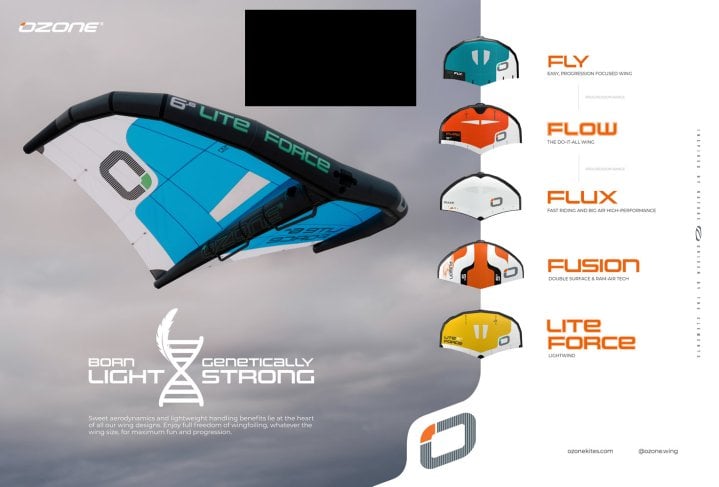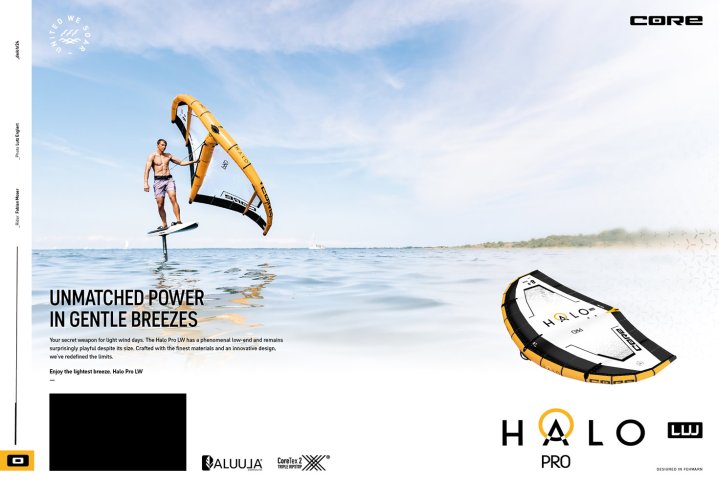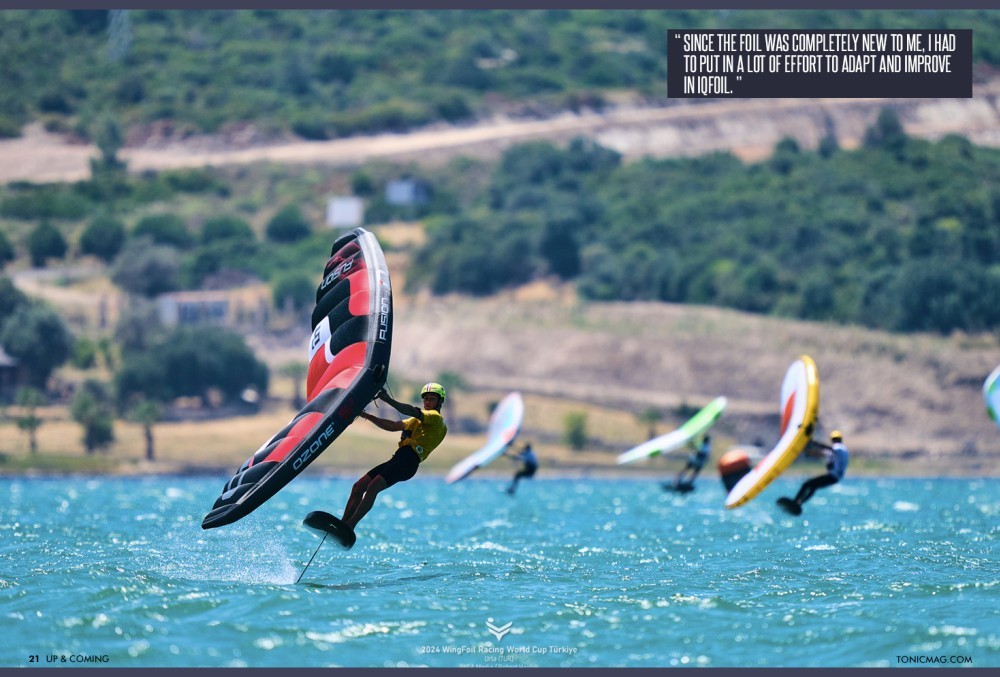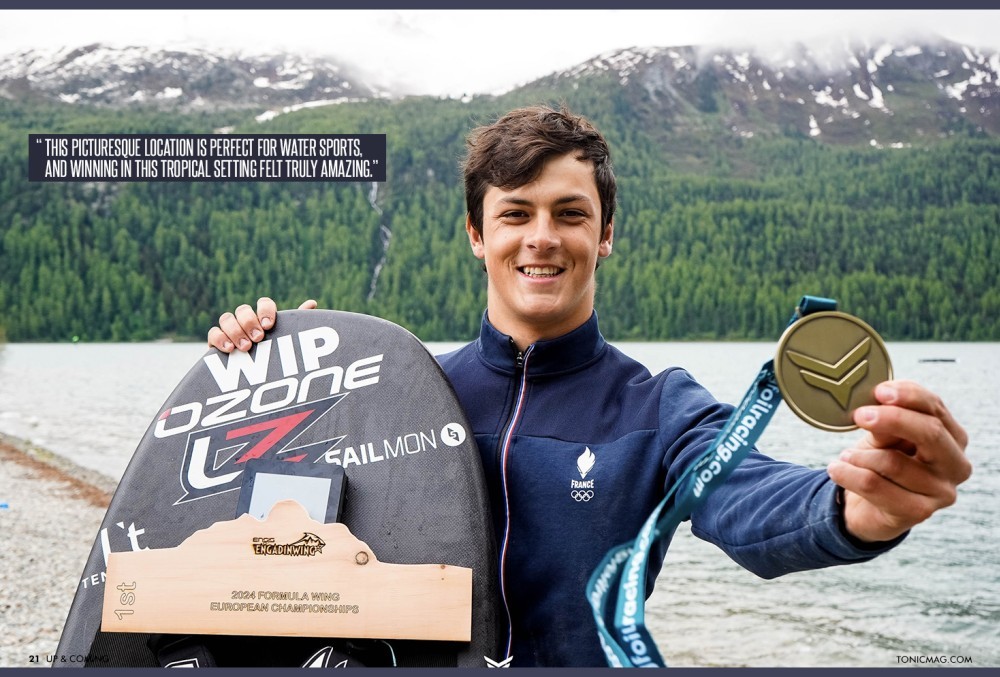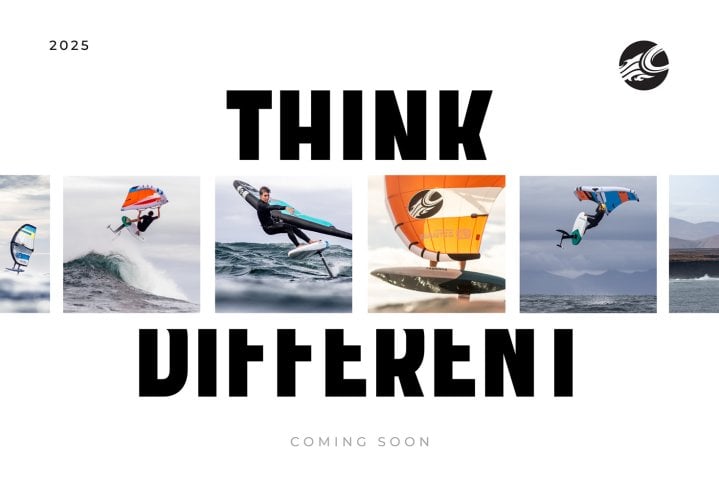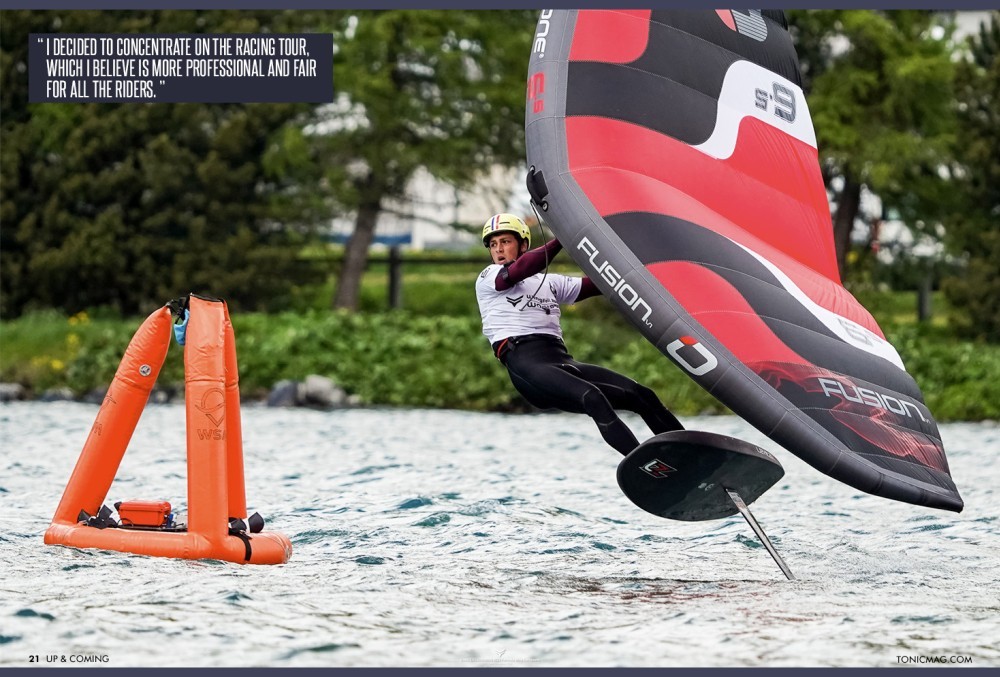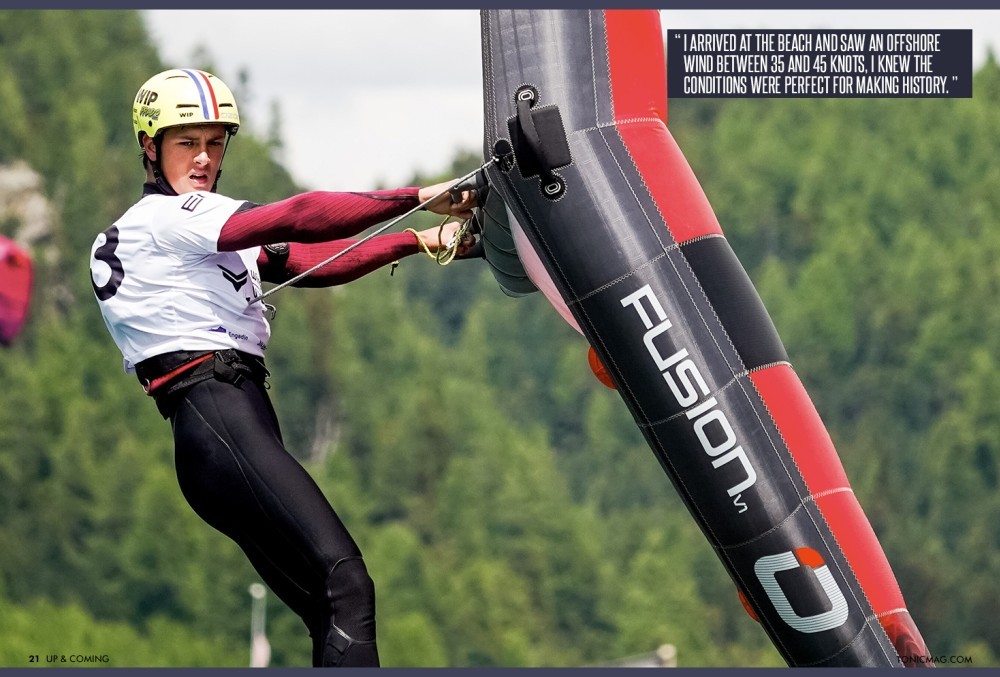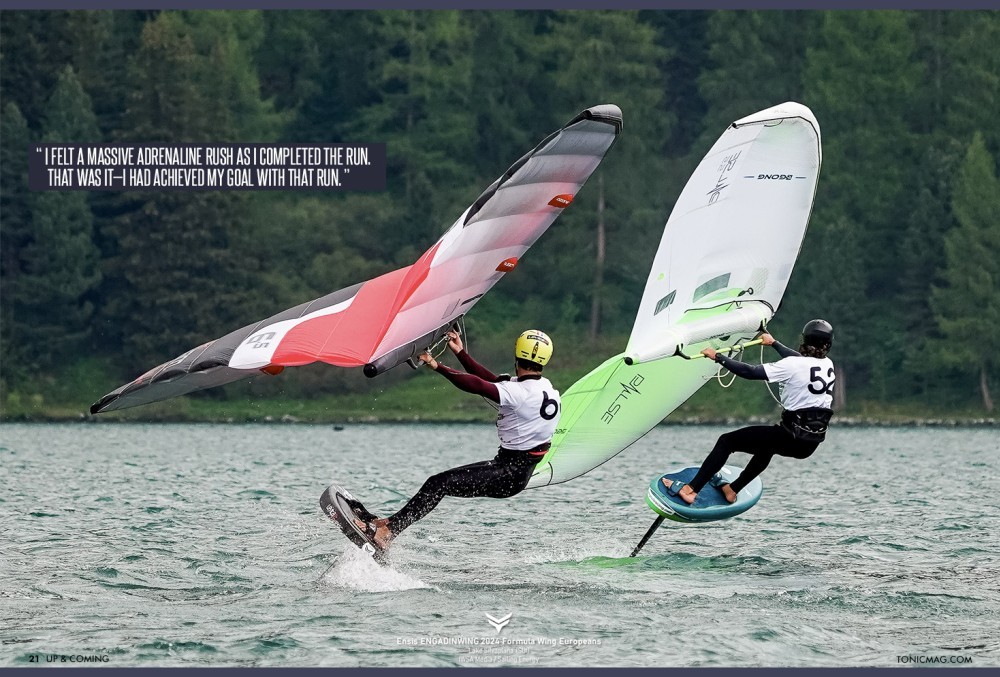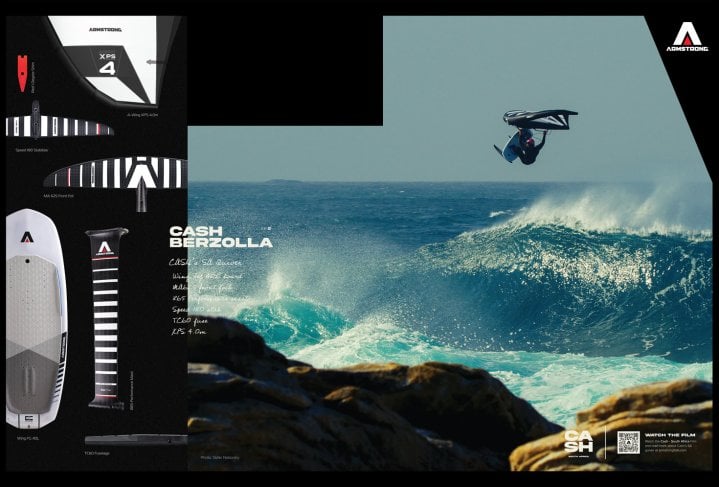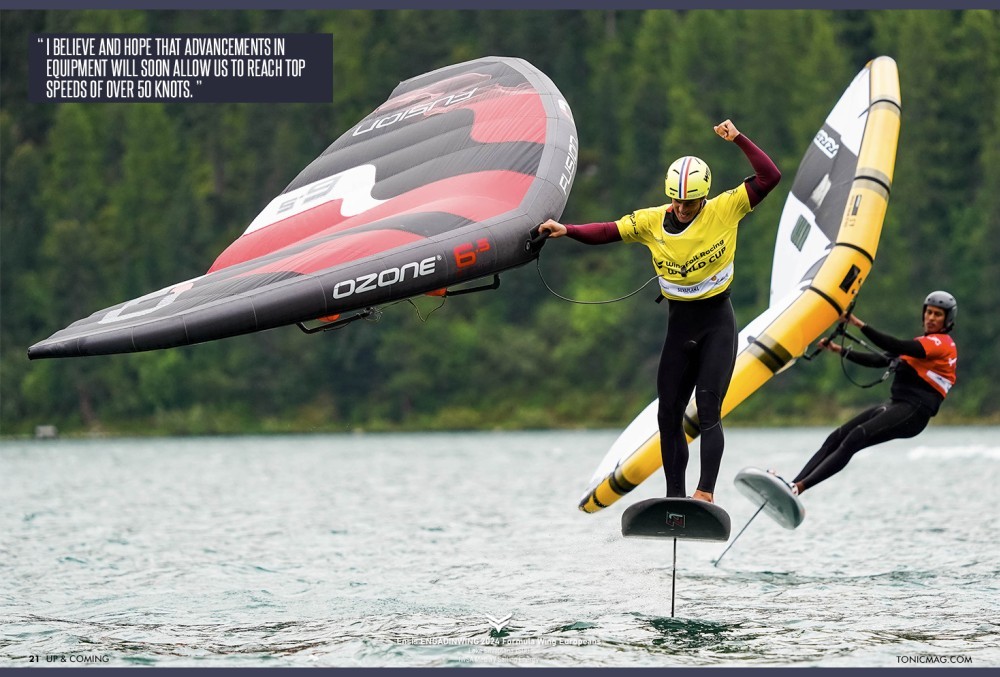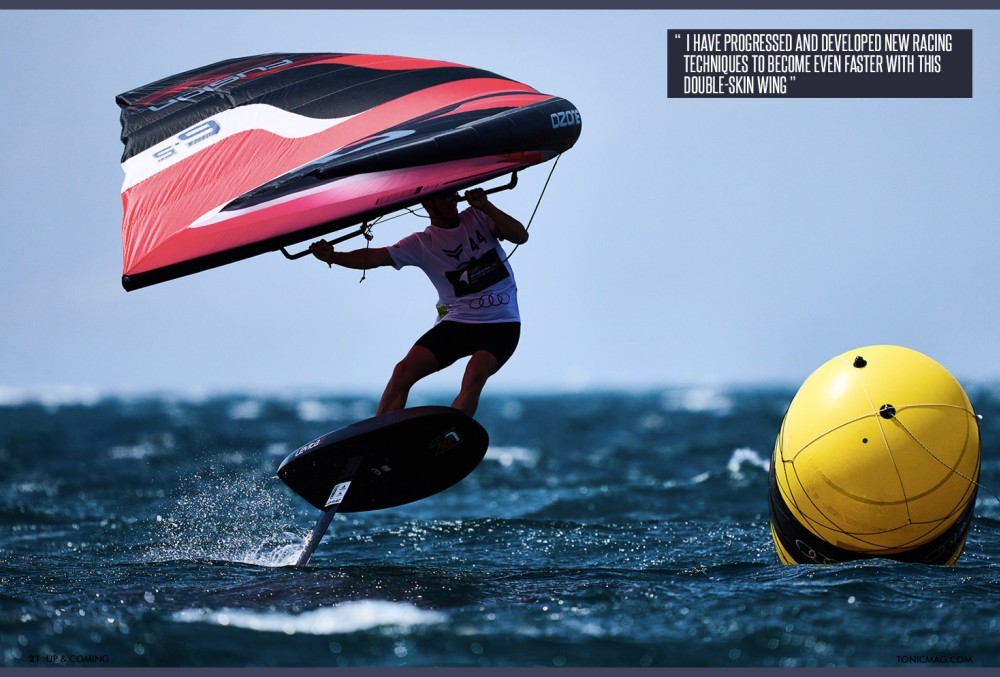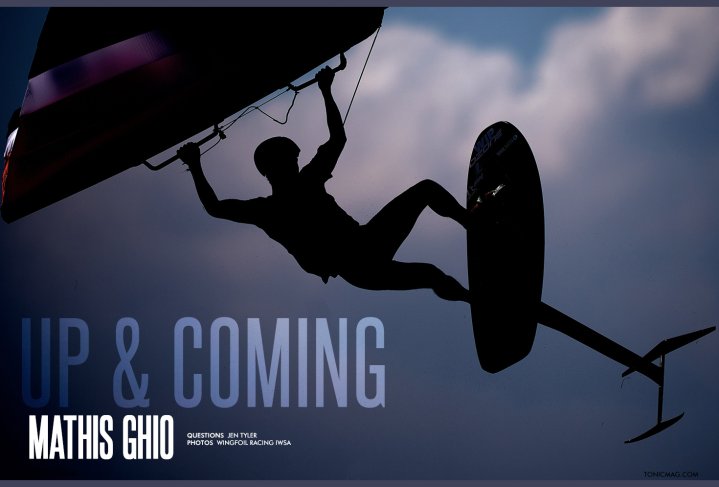
Up & Coming - Mathis Ghio
Issue 21 / Tue 20th Aug, 2024
In the fast lane of wingfoiling, Mathis Ghio is making waves with his recent speed record and his exciting partnership with Ozone. Join Jen Tyler as she chats with the rising star about his journey from Olympic windsurfing to wingfoiling, the challenges he's faced, and what’s next for this record-breaking athlete. Read the full interview exclusively in Tonic Mag!
Mathis, it's great to have you here. We have many questions for you, but let's start at the beginning! How did you first get into wingfoiling, and what drew you to the sport?
I am stoked to be here and grateful for this opportunity! In September 2020, after being a high-level windsurfer for ten years, I began my Olympic career just as the Olympic windsurfing gear transitioned from RS:X (fin board) to IQFoil (foil board). Since the foil was completely new to me, I had to put in a lot of effort to adapt and improve in IQFoil. This led me to diversify my activities and take up wing foiling.
I closely followed the Wingfoil scene and admired Balz Muller's creativity and role in advancing the sport. Despite achieving excellent results at the World Games in IQFoil, I was not selected for the French Team due to my engineering studies, which, according to the French Committee, were deemed to be taking up too much of my time.
At this point, I decided to fully commit myself to a career in wingfoiling.
You've been active in the wingfoiling scene since 2021. Could you share some of your highlights with us?
My first vivid memory is of my debut competition in wingfoiling at Leucate for the Mondial du Vent. I will never forget the warm reception from the other competitors when I arrived in this new environment. Despite being an 18-year-old unknown, I immediately felt at home and had great discussions with many people.
The Wingfoiling Racing format is truly unique, especially with its Medal Series on the final day. Everyone in the Top 10 has a chance to win the World Cup, and entering the final day in the first position is quite stressful, as unlike the other riders, I have everything to lose. So far, all the Medal Series I have participated in have been extremely successful, and I have managed to win all of them.
The feeling of crossing the finish line and realising that I have won the World Cup in a single race is simply epic.
Last but not least, winning the final World Cup in Jericoacoara, Brazil, for two consecutive years stands out in my mind. This picturesque location is perfect for water sports, and winning in this tropical setting felt truly amazing.
What are some of the biggest challenges you faced in your wingfoiling career, and how did you overcome them?
In 2021, when I was still competing in GWA (Global Wingsports Association) events and taking part in the Free-Fly Slalom and Surf-Freestyle disciplines, I encountered unfair judging during a freestyle heat and a race.
I felt a strong lack of fairness among the riders at the Mondial du Vent in Leucate. The event's focus seemed to be on putting on a great show for the audience without considering the safety of the participants. I was conflicted because I wanted to continue participating in these events to represent my sponsors on the podium. Still, I also felt uncomfortable and unsafe due to the lack of rules and the crowded competition format set by GWA. Additionally, I witnessed and experienced numerous unfair decisions the judges and officials made during the many GWA events I attended.
After discussing with my sponsors, I decided to concentrate on the racing tour, which I believe is more professional and fair for all the riders.
Since then, I've been very satisfied with my decision and have no regrets.
Tell us about setting a speed record with your Ozone Fusion! How did that idea come to mind?
Before joining the Ozone family, I had been steadily approaching 40 knots of speed with my old gear. The remarkable Fusion V1 ram air design is synonymous with speed, so when I joined the Ozone team, I set a goal to surpass 40 knots within the next year.
After being crowned the Wingfoil Racing European champion and completing my final semester exams at my materials engineering school, I returned to my hometown of Marseille.
On Sunday evening, while checking the forecast, I noticed 35-40 knots of Mistral wind would come to Marseille the next day.
On a whim, I packed my gear around midnight and headed to Le Rouet at 6 a.m. to attempt to break the 40-knot barrier. When I arrived at the beach and saw an offshore wind between 35 and 45 knots, I knew the conditions were perfect for making history. I embarked on a three-hour session with numerous speed runs.
On the 3rd speed run, I surpassed my previous top speed record of 38.01 knots by almost 1 knot. The location was ideal for achieving top performance.
I was too exhausted and not sufficiently cautious for these high-adrenaline runs, so I decided to end the session. My top speed at that point was 39.9 knots, with a speed over 10 seconds of 38.4 knots.
Leaving the water when I was so close was extremely difficult, but the risks increased, with several crashes occurring above 35 knots.
I had to accept my frustration and took a lunch break and a quick power nap in the car in order to return stronger for the afternoon session.
Once I returned to the water, the wind averaged 40 knots, with gusts reaching 45. I completed several runs and surpassed 40 knots in 5, achieving a top speed of 41.4 knots and an average speed over 10 seconds of 40.00 knots.
It was incredible to sail at that speed and witness everything around me slowing down. Since I had been stressed and my muscles were tense, I felt a massive adrenaline rush as I completed the run. That was it—I had achieved my goal with that run. Afterwards, I returned to shore, packed up my gear, and returned to Marseille.
What are some unique features of the Ozone Fusion wing that you believe set it apart and contributed to your record-breaking speed?
When reaching around 40 knots, it's crucial to consider the aerodynamic field to fly faster.
I believe that the Fusion's unique ram-air design with its double surface played a significant role in helping me achieve this speed record. Its shape enables it to smooth out gusts and turbulence, which is crucial for stabilising the wing, especially when flying at high speeds with offshore wind.
This wing's reduced drag enables it to surpass speed limits, as its profile is more aerodynamic and efficient than that of single-skin wings.
What sort of training do you do to prepare for a record attempt?
I make sure to prioritise core strength to efficiently transmit power from my wings to the foil. To achieve this, I follow a daily mobility routine. Before hitting the water, I visualise my runs, which helps me stay focused and stick to my plan. I also practice breathing exercises to stay calm and channel my energy and adrenaline before taking on my runs.
What are the limits for speed? Windsurfers and kiters have all broken the 50-knot is this even possible for wing surfers over a 500m course?
It might seem impossible, but who knows what the future holds. Two years ago, my top speed was 30 knots, and now I can maintain that speed on average during 20-kilometer races. I believe and hope that advancements in equipment will soon allow us to reach top speeds of over 50 knots. I have doubts about riding over 500 meters, as windsurfers and kitesurfers can navigate in very shallow areas near the beach, which helps them avoid strong, choppy water and turbulence, providing more stability during their runs. For wingers and kitefoilers, this is challenging because even with strong offshore wind, we often have to ride 100 meters from the beach where the chop is already pretty strong, creating white waters and disturbances.
Stability looks to be an issue, with the power of the wing going through your fluid body to the board, mast and foil, is it hard to stay in control at higher speeds?
Stability is crucial when wingfoiling at high speeds to avoid crashes. I've never crashed at speeds higher than 36 knots, which I'm grateful for because the rapid rebounds at that speed can be intense. Incorrect landing positions at high speeds can put a lot of strain on the neck and upper body, and I've even almost passed out at 35 knots due to a heavy impact and thorax contraction.
When the wind is unstable, it's essential to use the entire body to balance the wing's movements caused by gusts or shifts to prevent the foil from breaching, which always leads to a crash. This is why having a strong core is extremely important. A strong core prevents injuries and allows quick and strong weight balancing to counter unexpected foil behaviour.
What is your go-to set wingfoiling set-up?
At the moment, my go-to set-up is:
- Ozone 6.5m Fusion V1 wing with my custom colours
- Levitaz R6 Women foil (490sqcm front wing, 190 rear wing, and 112cm mast)
- Levitaz BOOM 58 RS board
How has joining the Ozone team contributed to your growth within the sport?
Since joining Ozone, I have learned a lot personally and technically. On the theoretical side, I am working with Simon Burner, Ozone’s co-wing designer, to develop the wing ranges, and I have been able to apply the knowledge and discipline I acquired during my scholarship in Materials Engineering. It is extremely interesting for me to use what I learned at school in a real-life project.
On the other hand, I have progressed and developed new racing techniques to become even faster with this double-skin wing, which led me to claim the European Title and win the first World Cup of the year.
These results have allowed me to become the leader of the world ranking after two competitions out of 6, and I definitely think that the Fusion is one of the main reasons for my current position.
Who have been your biggest inspirations and supporters throughout your career?
I owe a lot to my parents, older brother, and girlfriend for always supporting and encouraging me in my career.
Transitioning from IQFoil to wingfoiling has been one of the best decisions of my life, but mentally, it was also one of the most challenging periods. I struggled with depression for several months and lacked the motivation to do any kind of activity. Discovering the joy of winging helped me return to my favourite element: the water.
What’s next for you?
My next event is the Wingfoil Racing World Cup in China, which is an 8-star event and crucial for the world title. This event is the most important of 2024.
Awesome, thanks so much, Mathis and best of luck!
Thanks, Jen!
By Jen Tyler
Italian/Egyptian Jen Tyler grew up on the sandy beaches of the Red Sea and has been on the IKSURFMAG & Tonic Mag team since 2017.


